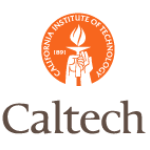- Industrie:
- Number of terms: 3726
- Number of blossaries: 0
- Company Profile:
The first star other than the Sun to have its parallax, and hence distance, measured. The star is a double orange dwarf.
Industry:Astronomy
One of about a dozen of the strongest Fraunhofer lines seen in the Solar spectrum, the A band at 7600 angstoms is due to telluric lines of molecular oxygen in the Earth's atmosphere. (originally thought to originate in the Sun by Fraunhofer.)
Industry:Astronomy
Star with spectral type A in which the spectrum of the Balmer lines of hydrogen attain their greatest strength. Helium lines can no longer be seen. Some metallic lines are present; in late A stars the H and K lines of ionized calcium appear. A0 stars have a color index of zero.
Industry:Astronomy
Trojan asteroid (60° ahead of Jupiter. It was the first Trojan to be discovered.
Industry:Astronomy
(alpha Sco, HR 6134) Una supergigante rossa M1 Ib. Ha un compagno B3 V, che è una sorgente radio.
Industry:Astronomy
1) An elementary particle of opposite charge but otherwise identical to its partner. Most of the observable universe consists of particles and matter, as opposed to antiparticles and antimatter.
2) Atomic particles that have the same mass as, but opposite charge and orbital direction to, an ordinary particle. Thus, instead of negatively charged electrons, atoms of antimatter have positrons. A quantity of antimatter coming into contact with matter would "cancel out" - annihilate, with total conversion of mass to energy - an exact proportion of matter corresponding to the original quantity of antimatter, provided that the elements in the matter also corresponded with the "elements" in the antimatter, i.e., that the atoms were equivalent but opposite.
3) For every known type of particle, there exists an antiparticle with exactly the same mass, but with the opposite electric charge. When a particle and its antiparticle come together, they can always annihilate to form gamma rays. The antiparticle of an electrically neutral particle is sometimes the same as the original particle (e.g., photons) and sometimes it is distinct (e.g., neutrons.)
4) Particles predicted by combining the theories of special relativity and quantum mechanics. For each particle, there must exist an antiparticle with the opposite charge, magnetic moment and other internal quantum numbers (e.g., lepton number, baryon number, strangeness, charm, etc.), but with the same mass, spin and lifetime. Note that certain neutral particles (such as the photon and π0) are their own antiparticles.
5) Particles with identical mass and spin as those of ordinary matter, but with opposite charge. Antimatter has been produced experimentally, but little of it is found in nature. Why this should be so is one of the questions that must be answered by any adequate theory of the early universe.
Industry:Astronomy
Una vecchia stella subgigante disco (K2 IIIp, mv = 0,06) circa 11 pc distanti.
Industry:Astronomy
Una subgigante K5 III (una stella di primo piano nelle IADI). Ha una debole compagna M2 V. È ormai noto per essere lentamente e irregolarmente variabile.
Industry:Astronomy
1) Un sistema eclipsing di almeno tre componenti (B8 V, K0, Am). Periodo di componenti A e B è circa 68,8 ore; periodo di componenti A, B e C è di circa 1,9 anni. Osservazioni a lungo termine indicano anche un quarto componente massiccia, invisibile, con un periodo di circa 190 anni. Algol è anche una fonte radio irregolare di circa 0,5 diametro AU.
2) Il più famoso binaria ad eclisse, Algol fu probabilmente la prima stella variabile scoperta. Si trova nella costellazione di Perseo ed è costituito da due stelle che orbitano a vicenda ogni 2,87 giorni. Quando una stella passa davanti a altro, offusca la luce del sistema.
Industry:Astronomy
